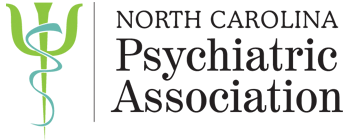- Home
- About
- Foundation
- Advocacy
- Conferences & Events
- Jobs & Classified Ads
- Contact Us
Public Health Emergency to End May 11The federal Public Health Emergency (PHE) is scheduled to end of May 11, 2023, which will create changes to how healthcare has been delivered these past three years. Under the PHE, a number of restrictions were lifted to help patients receive services; many of the pre-pandemic rules will go back into place when the PHE ends. For example, health care professionals will be required to use a HIPAA-complaint software for telehealth. NEW! The DEA is considering changes to the ability to prescribed controlled substances via telemedicine. The telehealth flexibilities will remain intact until at least November 11, 2023. The DEA's proposed rule for prescriptions of telemedicine include controlled substances and medication for opioid use disorder. The following is a summary of the proposed rules:
Under these proposed rules, a practitioner may prescribe a controlled substance only after a telemedicine visit if the prescription is a non-narcotic Schedule III, IV, or V controlled substance (or buprenorphine), and the prescription is limited to a 30-day supply. For these prescriptions listed above, the patient must have an in-person appointment before they can continue their treatment past 30-days. The in-person medical evaluation can be completed by: the prescribing provider or by another DEA registered provider that results in a "qualified telemedicine referral." The referral must include the diagnosis, evaluation, or treatment that was provided to the patient. The referring provider and prescribing provider must document the referral in the medical record. After the in-person visit, the prescribing practitioner can continue to prescribe the controlled medication without additional in-person appointments. For patients who established care during the PHE (between 1/30/2020 and 11/11/2023), the patient will have up to a year (11/11/2024) to have an in-person appointment. There will be increased record keeping requirements under the proposed rule, the prescribing provider must notate on the prescription/order that the prescription is being issued via telemedicine. The prescriber must also use all efforts to access the Prescription Drug Monitoring Program, or PDMP, (in NC, this is the Controlled Substance Reporting System) to review the patients prescription history for the past year. If the prescriber cannot access the PDMP, only a 7-day supply of the medication can be prescribed. Other changes when the PHE ends will include:
Many states and insurers have made permanent changes to telehealth, which are no longer linked to the PHE. The Consolidated Appropriations Act of 2023 extended telehealth flexibilities for Medicare patients, including postponing in-person requirements until at least the end of 2024. For psychiatrists who transitioned from an office-based to a hybrid or fully virtual role, the APA has created several resources to help make sense of the expected changes to come:
Resources |
